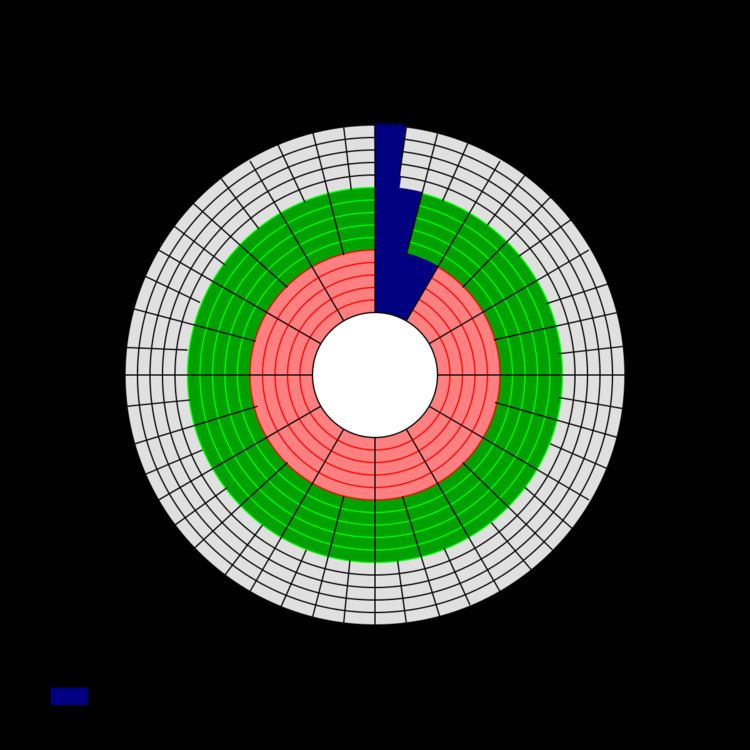 | ||
In computer storage, zone bit recording (ZBR) is a method used by disk drives to store more sectors per track on outer tracks than on inner tracks. It is different from zoned constant angular velocity (Zone CAV, Z-CAV, or ZCAV).
On a disk consisting of roughly concentric tracks – whether realized as separate circular tracks or as a single spiral track – the physical track length (circumference) is increased as it gets farther from the center hub.
The inner tracks are packed as densely as the particular drive's technology allows, but with a CAV drive the data on the outer tracks are less densely packed. Using ZBR the drive divides all the tracks into a number of zones, and the inner track of each zone is packed as densely as it can, with the other tracks in that same zone recorded with the same read/write rate. This permits the drive to have more bits stored in each track outside of the innermost zone than drives not using this technique. Storing more bits per track equates to achieving a higher total data capacity on the same disk area.
On a hard disk using ZBR, the data on the tracks in the outer most zone will have the highest data transfer rate. Since both hard disks and floppy disks typically number their tracks beginning at the outer edge and continuing inward, and since operating systems typically fill the lowest-numbered tracks first, this is where the operating system typically stores its own files during its initial installation onto an empty drive. Testing disk drives when they are new or empty after defragmenting them with some benchmarking applications will often show their highest performance. After some time, when more data are stored in the inner tracks, the average data transfer rate will drop, because the transfer rate in the inner zones is slower; this, combined with the head's longer stroke and possible fragmentation, may give the impression of the disk drive slowing down over time.
Some other ZBR drives, such as the 800 kilobyte 3.5" floppy drives in the Apple IIGS and older Macintosh computers, don't change the data rate but rather spin the medium slower when reading or writing outer tracks, thus approximating the performance of constant linear velocity drives.
